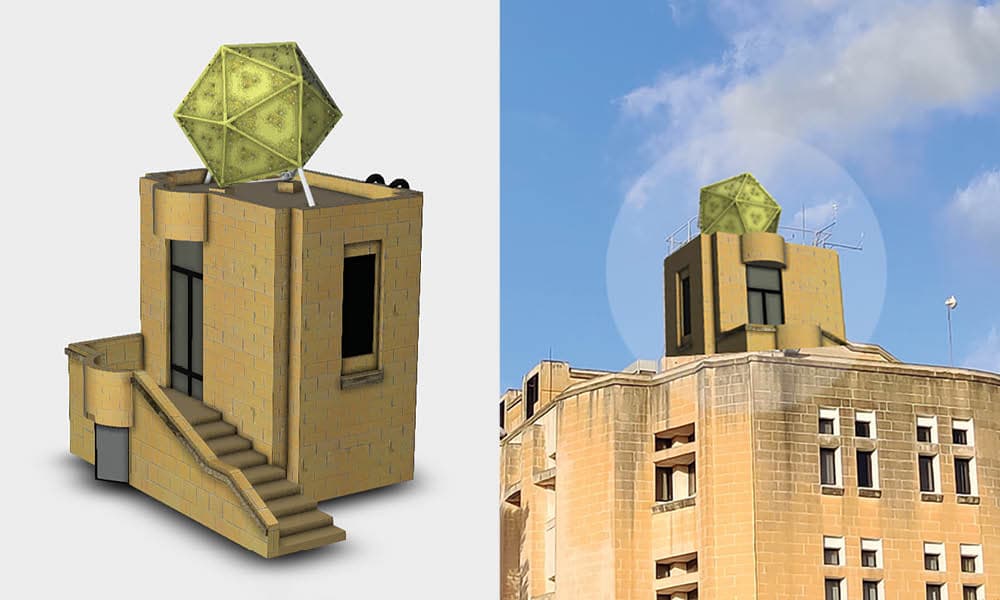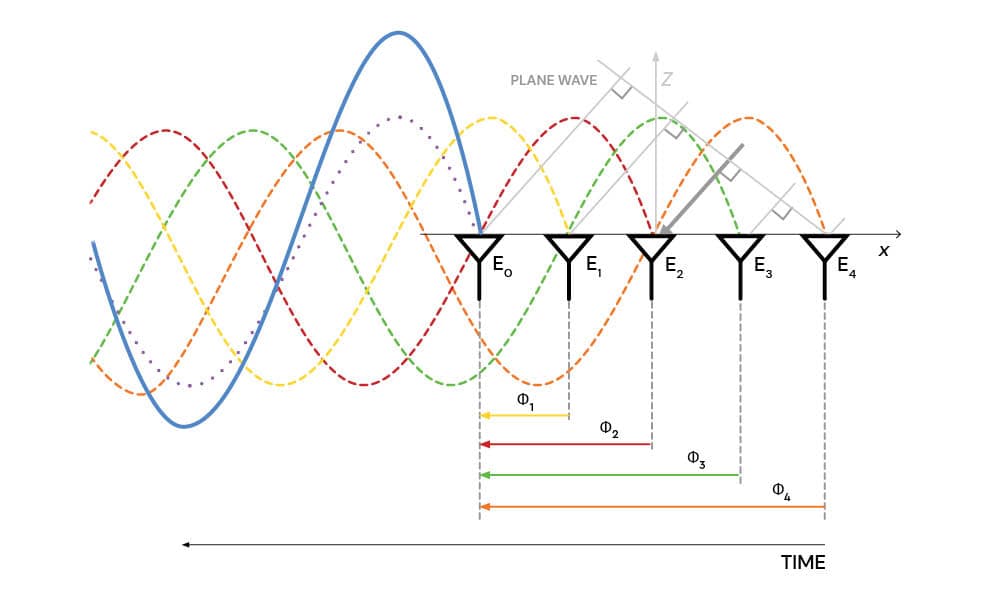The night sky might remind you of space, but do you think of space when looking down at your phone? From checking the weather to looking up directions or calling friends, there are a myriad of satellites above that keep you informed and your phone connected. Now a team of researchers and engineers from the University of Malta’s Astrionics Research Group (ASTREA) are developing their own satellite and ground station for Malta to take its place in the night sky above.
Space is often out of reach due to the great expense of parts, maintenance, and launching. However, Charles Grech, Dr Ing. Marc Anthony Azzopardi, Prof. Ing. Victor Buttigieg, and the rest of the ASTREA research team are producing innovative, low-cost solutions. The research comes at an important time as the 2022 Malta National Space Strategy undergoes consultation.
E.T. Phone Home
The ASTREA team is developing Malta’s first satellite, UoMSat, which will be used to test components in space. It is a pico-satellite or PocketQube, measuring 5cm x 5cm x 5cm, and it weighs no more than 250 grams. That’s about the same volume and weight as a smartphone.
This may sound small, and it is. ‘By taking on particular constraints, it makes the challenge all the more interesting. But we’re not just making it difficult for difficulty’s sake,’ says Azzopardi. ‘There are also valid reasons for going small: reducing the size and launch costs, launching in low space orbit while not contributing to space debris, and smaller satellites can be launched repeatedly to maintain a service.’
The size of UoMSat offers the team another advantage. It can easily house advanced components typically used in mobile phones such as microprocessors, sensors, battery technology, and case materials that have potential for applications in space. The use of commercially available components can help make future space projects more affordable by eliminating the need for custom parts.
‘Nobody wants to be the first one to use these devices in space unless they have been tested and shown to work well in space environments — the radiation, the temperature swings,’ explains Azzopardi. ‘The satellite acts as an in-orbit demonstration. In a laboratory, you can only approximate the conditions. To mimic all aspects of the space environment would become so expensive it would probably be cheaper to just launch and see what happens.’
This small, low-cost satellite is ideal for this application: demonstrating that the components function well in space, reducing the risk of using them in future missions, and allowing for space research to borrow technology from the mobile phone industry.

Valletta, We Have a Problem
Launching a satellite is only half of the challenge. You also have to track and communicate with it. That’s where a ground station comes in.
Trying to find your lost phone down here on earth can be challenging enough, but for the research team, they have to find a 125cm3 needle in the haystack of space. Whizzing across the sky at some 7km per second, 500km above sea level, the satellite will orbit the Earth every 90 minutes and will be visible from Malta for three passes in the morning and three passes in the evening, with each pass lasting between 5-10 minutes. Only during those short windows will the research team be able to send and receive data directly to their satellite.
Typically, ground station antennas are steered with mechanical parts to point them at the moving satellite. Yet the drawbacks of wear and tear, slow steering response, expensive maintenance, and an inability to track multiple satellites at once pushed the research team to look for a different solution. They landed on a phased array.
A phased array system consists of a series of antennae that each emit or receive a signal with a specific time delay. This means the antenna can point without any physical movement. Imagine each of your ears is an antenna listening to a specific continuous hum. You can hear it in both ears, but the noise is louder in your right ear — indicating that the humming is coming from the right. Both antennae are picking up the signal, but it is stronger on the right, indicating where the satellite is. The multiple antennae of a phased array does this in many directions using constructive interference as radio waves combine to electronically steer the beam — both for receiving and sending signals.

Ground Control to University of Malta
Phased arrays are typically used in telecommunications and military applications. They are expensive to deploy and may easily involve six or seven-digit figure costs. The ASTREA team’s challenge has been to build a small system capable of fulfilling their needs for only €10,000.
‘Coming up with an entry-level system which meets the demands of existing traditional systems already opens up other opportunities. The performance of the system is not comparable to military grade systems, but nonetheless, with practically no additional costs, we’re starting to tap into certain benefits at a high level. That’s critical,’ explains Charles Grech. ‘If you don’t know the location of the satellite, you’re basically waving a wand and pointing to every possible location of the sky, and you’ll find it’s just not going to be feasible, considering a satellite would cross the sky within a couple of minutes. So we’re creating a tool via this beam steering to scan the sky to see where the highest power signal is coming from. This would tell us the direction of arrival of the satellite signal and implicitly where it is in orbit.’
The ground station’s dome of antennae will take pride of place on the roof of the University of Malta’s Faculty of Engineering building, on top of the University’s new Radio Lab. In order to build a compact system to fit on the roof, Grech had to design an impressive 20-sided geometric dome, with each triangular side consisting of four triangular patches of antennae. There are still challenges to reducing the size because the team are using ultra high frequency (UHF) radio waves of 435MHz which have a wavelength of around 70cm, compared to the 89.7MHz used by radio stations. Each ground station antenna, of which there are seventy-two, needs to be around half this length and spaced out for a good reception. Furthermore, the satellite would ideally have its own 35cm antennae — a difficult task for something with sides only 5cm long!
Azzopardi explains, ‘So we establish a link. We send a command. We interrogate the satellites, and the satellite relays the information back down, also as a radio wave.’ The ground station phase array locates the satellite in the sky by electronically steering towards its radio signal; the station sends a radio signal to the satellite asking it for a process like data transfer; the satellite sends a radio signal back to the station with the data encoded in it; and the ground station receives that data, and the researchers can review it.
The appeal of this innovative, affordable ground station design extends beyond the University. In addition to being able to receive signals from other satellites using UHF radio waves, it further reduces the cost of accessing space, and the technology could be packaged and used by other universities or companies.
One Small Satellite for Malta…
One giant leap for Malta’s space policy. This is what the ASTREA team are working towards. Grech smiles, ‘From a personal point of view, I mean this is Malta’s first satellite. So every person contributing to the project is contributing to basically a historic aspect for the country. You know, there is a certain element of pride that one also gets from the project.’
Malta’s first National Space Policy was published in 2017, potentially accelerated by the fact that the satellite project was already underway and the University’s researchers were showing interest in space. This year sees a consultation on the 2022 Malta National Space Strategy, and there are hopes of continued funding, ambition and awareness of the efforts to put Malta in space.
Collaboration will also continue to be an essential part of the ASTREA team’s research. ‘Having one project which combines the different capabilities and strengths helps bring the community together. This was highly student driven. Different students started coming in and chipping in to the different subsystems that would eventually come together to do a complete satellite. From nearly every aspect, this project was developed incrementally by many, many students, and there’s probably been a couple of dozen by now,’ says Azzopardi.
Currently, the satellite is due to be fully functional by 2024, with a launch date to be confirmed once funding for it is secured. Grech looks forward to that, ‘We are proud. We certainly will be chuffed the day we launch, and even more chuffed after having managed to read any [data] out of it!’
When that day comes, you can look up at the night sky and see a glint of Malta among the stars. Perhaps before then, you will only need to look up to the roof of the University of Malta Engineering Faculty, and you’ll see the ground station — a reminder of space close to home, a reminder that space is within reach.
Project ASTREA is financed by the MCST, for and on behalf of the Foundation for Science and Technology, through FUSION: The R&I technology Development Programme 2019.





Comments are closed for this article!